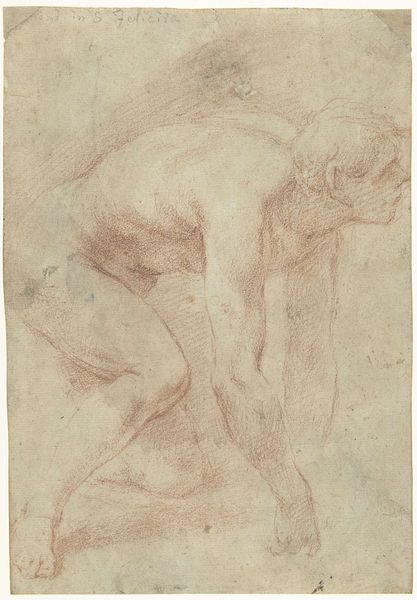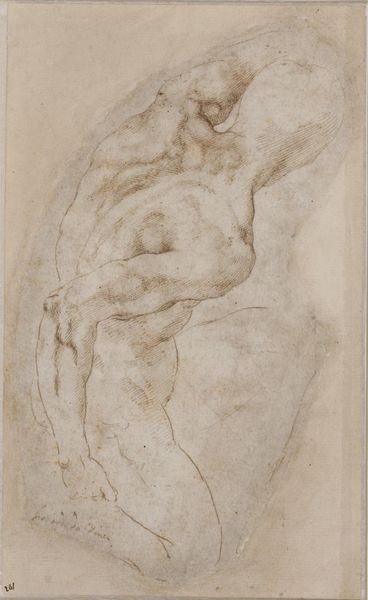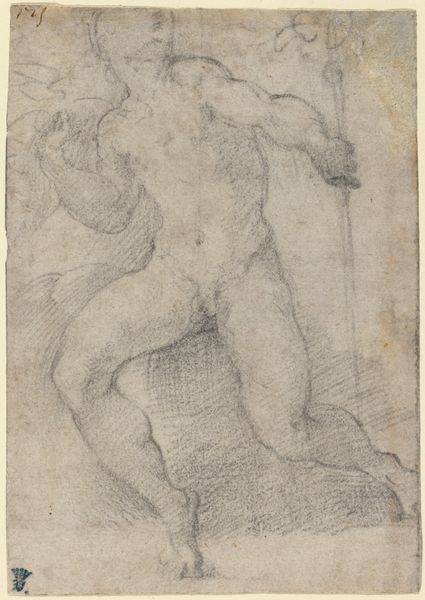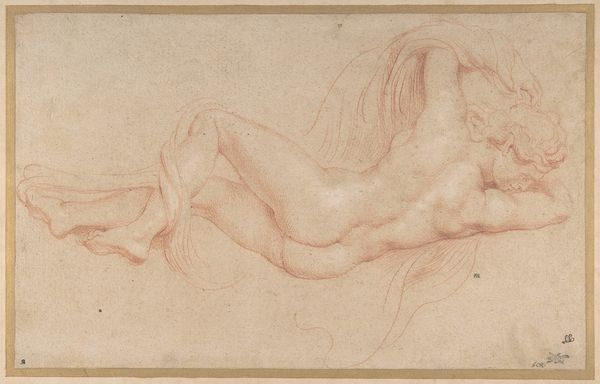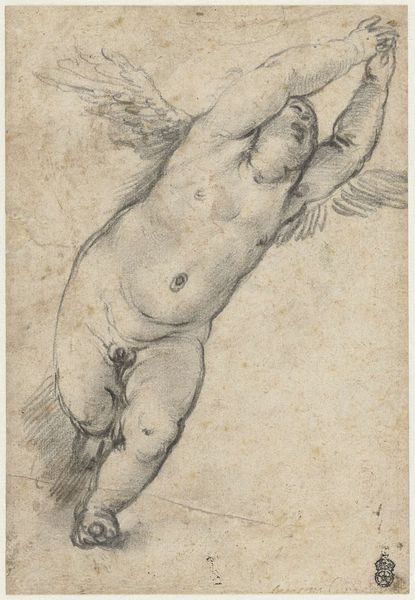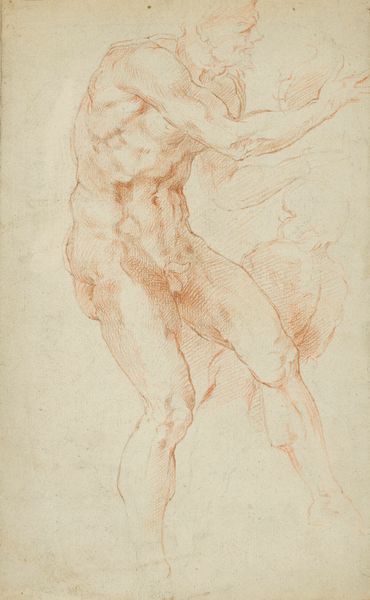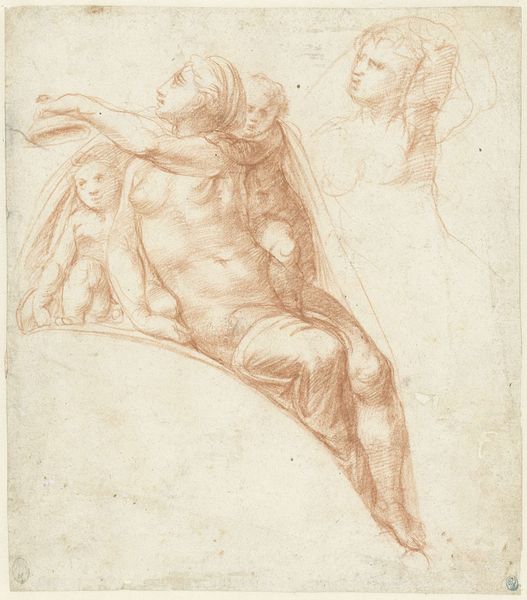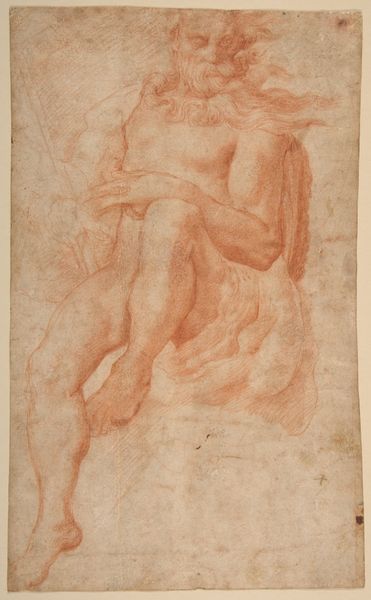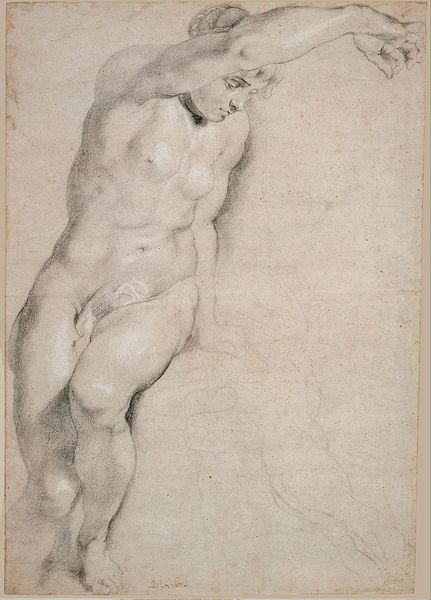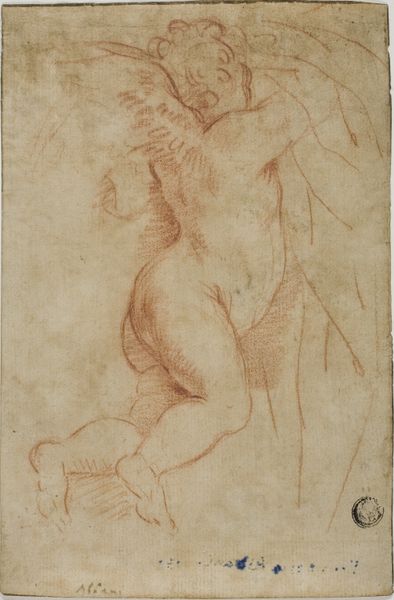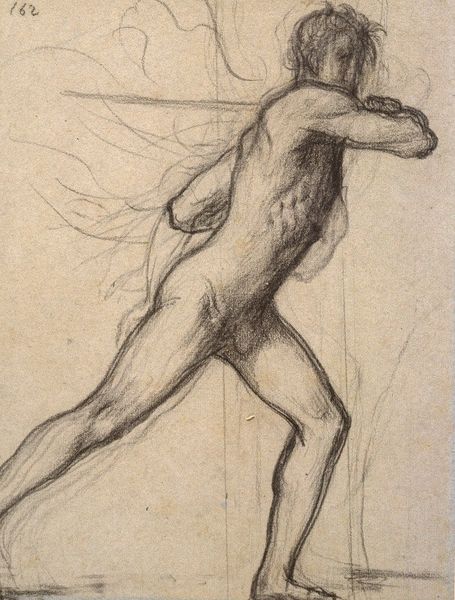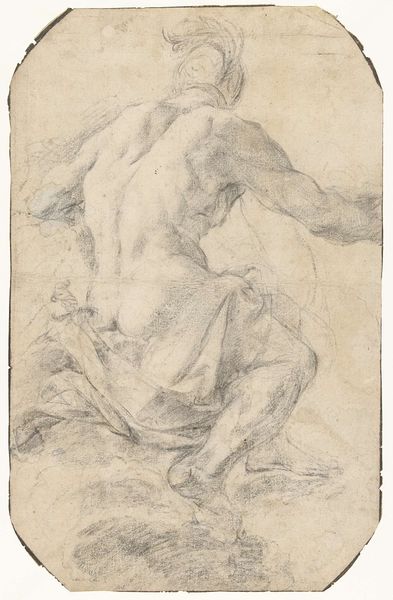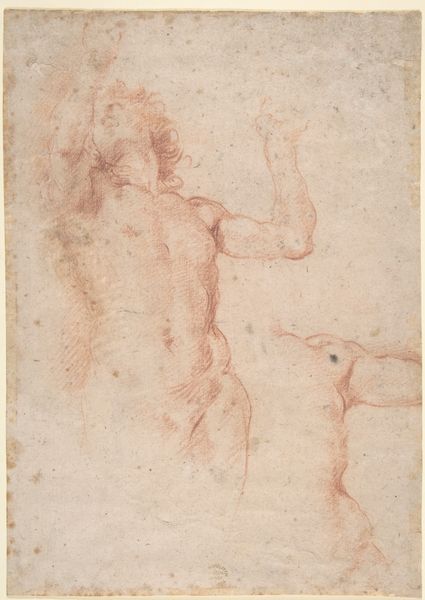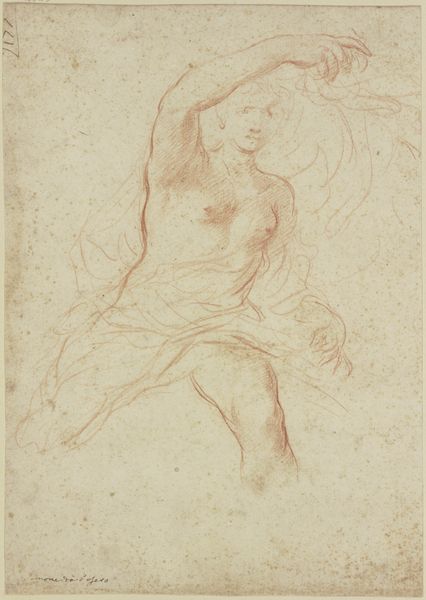
drawing, paper, pencil, charcoal
#
portrait
#
drawing
#
charcoal drawing
#
figuration
#
paper
#
form
#
pencil
#
line
#
charcoal
#
academic-art
#
italian-renaissance
#
nude
Copyright: Public Domain: Artvee
Editor: Here we have Raphael's "Study of a Nude Male Figure," created around 1506 or 1507 using pencil and charcoal on paper. It strikes me as a really dynamic pose, full of energy. How do you interpret this work, particularly in light of Raphael's broader artistic practice? Curator: I see in this drawing the nascent echoes of classical ideals, but reshaped through a uniquely Renaissance lens. The figure, caught in this dynamic pose, carries within it layers of symbolic meaning that resonated deeply with Raphael's contemporaries and continue to speak to us today. How do you perceive the line work, its strength and delicacy? Editor: It seems like he’s really focusing on musculature and form. There’s a clear emphasis on the ideal male physique, almost heroic in its portrayal. Curator: Precisely! And that's not merely aesthetic. Consider the cultural memory associated with the male nude in Renaissance art; it’s a visual vocabulary, referencing strength, virtue, and even divine inspiration. The placement of light and shadow also conveys much of what Raphael wanted to say. Does that strike you as interesting? Editor: Definitely, so would you say this work signifies some kind of return or homage to classical ideals within the Renaissance? Curator: Yes, but more than that, it represents a reinterpretation. The symbol of man – his intellectual and physical prowess – becomes a testament to human potential, a visual declaration of Renaissance humanism. A powerful signifier when we consider shifting cultural and philosophical winds of the time. Editor: That's a very helpful analysis! It shifts my understanding of the drawing away from just skill and towards symbolism. Curator: I agree. Seeing the body, seeing the symbolism; these ways of seeing both make the drawing come to life for the modern audience.
Comments
No comments
Be the first to comment and join the conversation on the ultimate creative platform.
